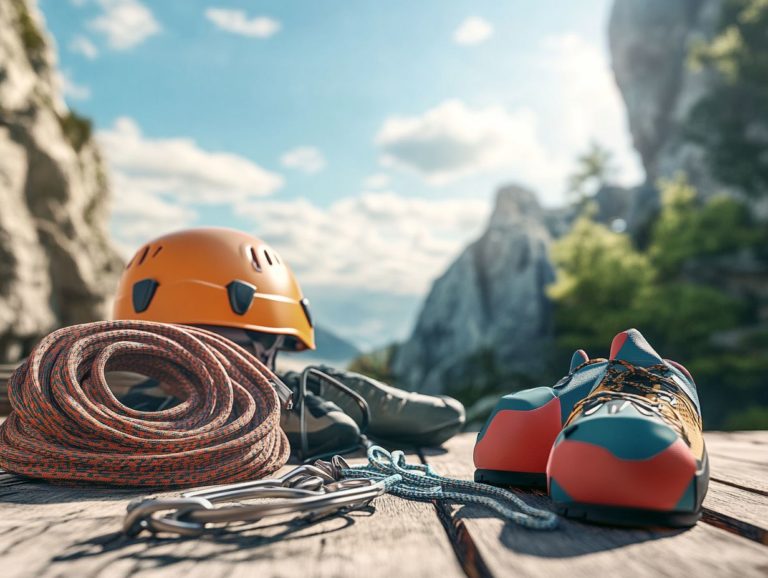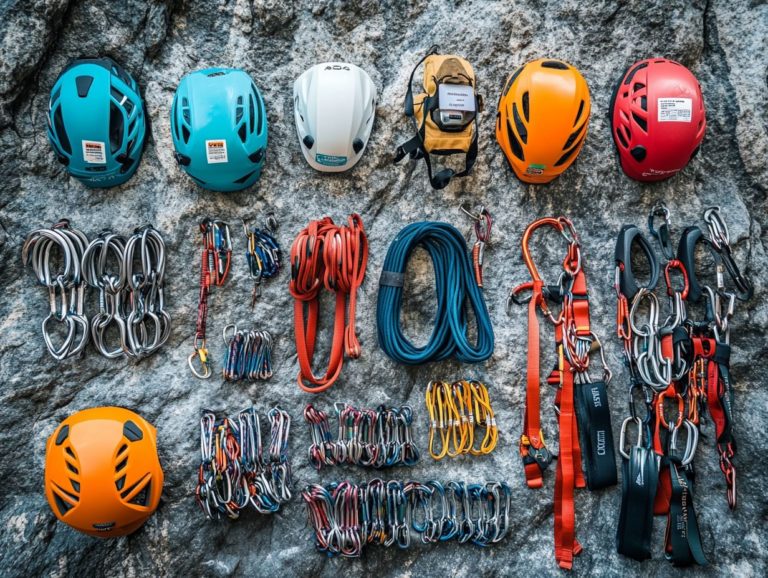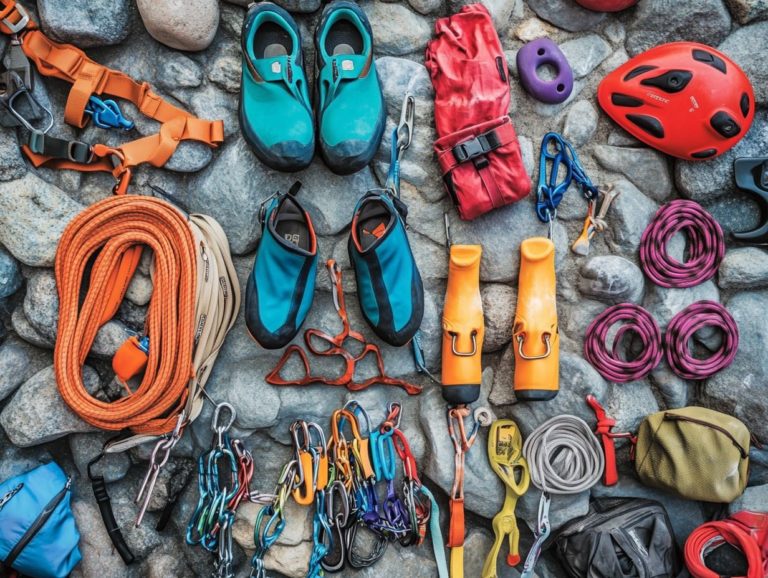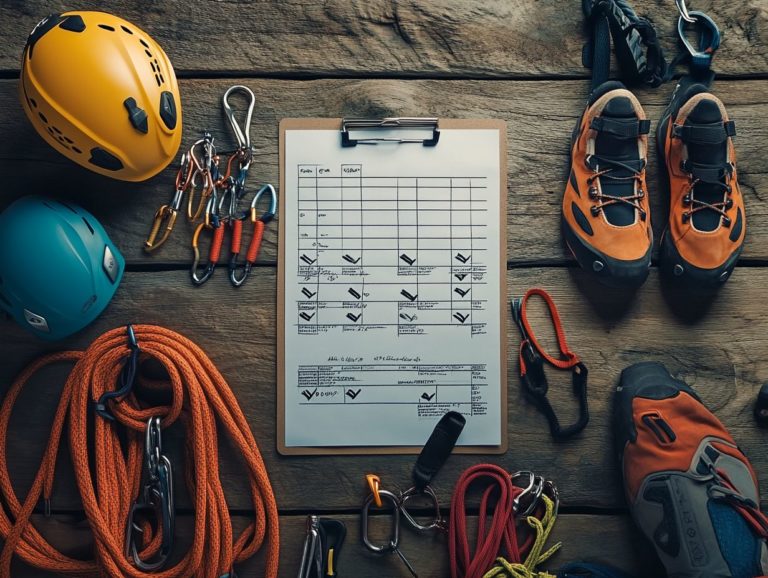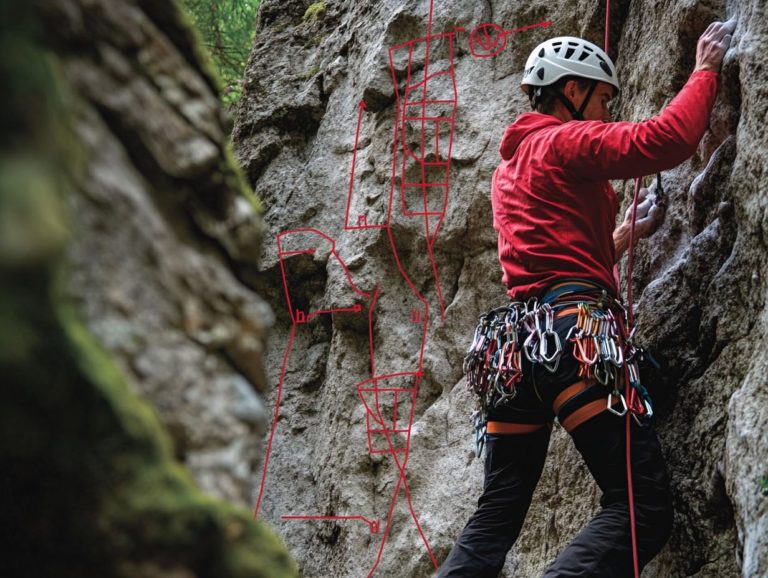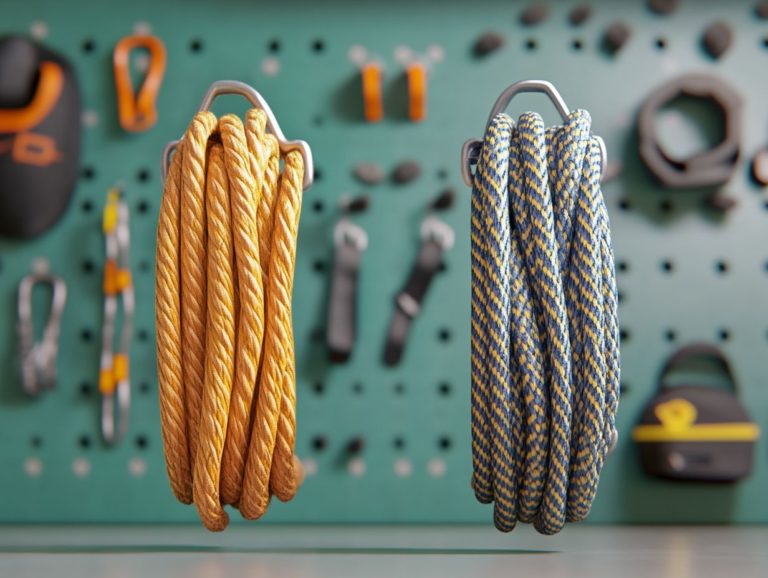How to Repair Common Climbing Gear Issues
When it comes to climbing, keeping your gear in top shape is crucial for your safety and success!
This article delves into the significance of gear repair, shedding light on common issues like torn ropes, worn harnesses, and damaged carabiners. You ll find practical fixes for these problems, along with valuable tips on maintaining your equipment to prevent future mishaps.
You ll also learn when to call in the professionals.
By ensuring your gear is always reliable, including conducting gear inspections, you can stay safe and climb with confidence!
Contents
- Key Takeaways:
- Why Gear Repair is Important
- Common Gear Issues and How to Fix Them
- Preventing Gear Issues
- When to Seek Professional Help
- Frequently Asked Questions
- How can I fix a torn climbing harness?
- What should I do if my climbing rope has a core shot?
- How do I fix a stuck zipper on my climbing pack?
- What should I do if my carabiner gate is not closing properly?
- How can I repair a damaged camming device?
- What should I do if my belay device is not functioning properly?
Key Takeaways:
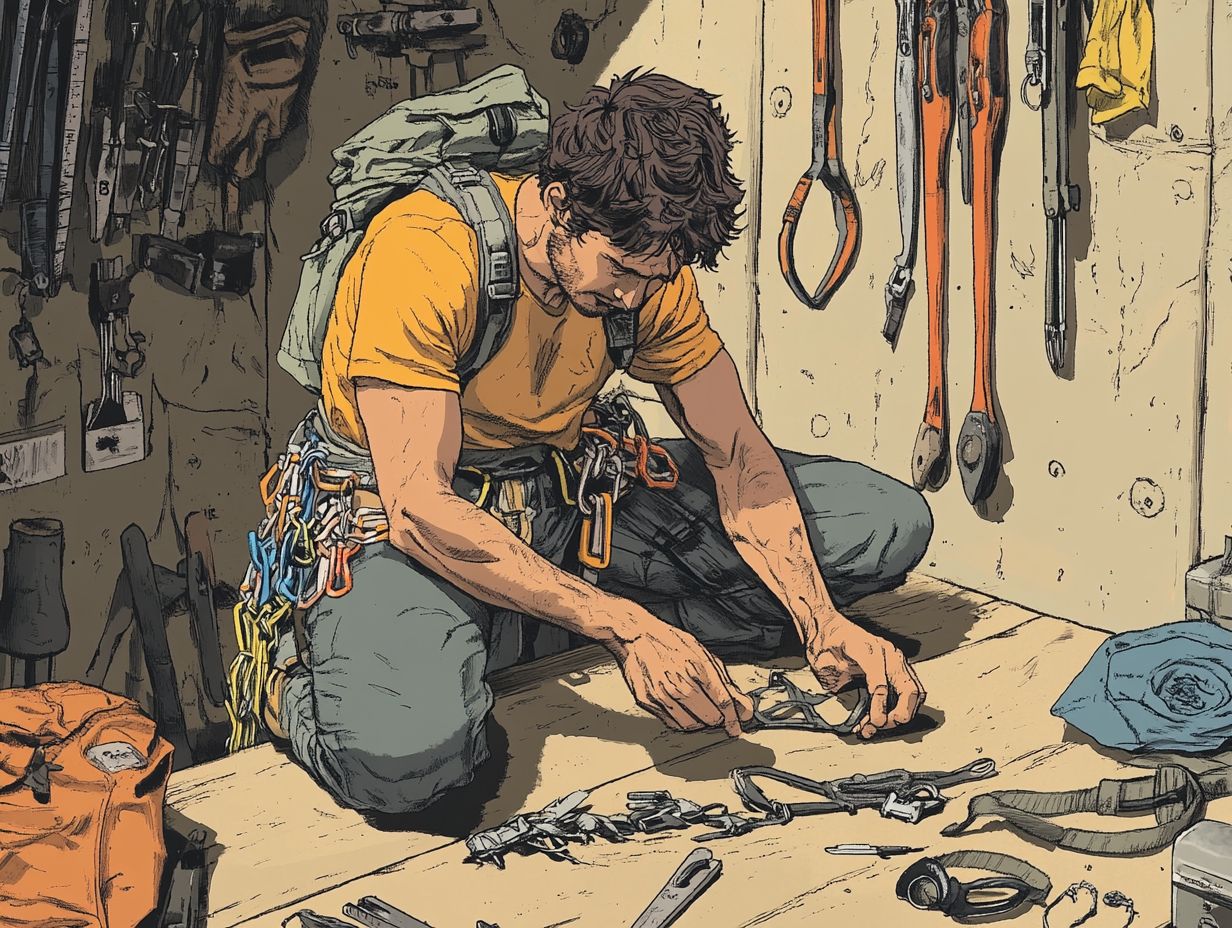
- Regular inspections and maintenance help prevent issues and prolong the life of your gear.
- Torn or frayed ropes, worn-out harnesses, and damaged carabiners can be repaired with proper techniques, but broken cams, nuts, or leaky water bottles may need replacement. It’s essential to address safety issues swiftly when it comes to climbing gear.
- If you re unsure about your gear s safety, seek professional help immediately!
Why Gear Repair is Important
In the realm of alpine climbing, prioritizing the safety and reliability of your gear is absolutely essential. Even the slightest damage to nylon the material used in climbing ropes or the sheath (the outer protective layer of the rope) can escalate into serious safety concerns when facing challenging routes like the Pinnacle in North Conway, NH.
Proper gear repair not only enhances the lifespan of your climbing equipment but also prevents further damage stemming from neglect, making it a vital practice for every climber.
Embracing DIY repairs, conducting regular gear inspections, and utilizing high-quality materials are crucial steps to keep your climbing gear in peak condition.
Common Gear Issues and How to Fix Them
When you embark on an alpine climbing adventure, you’ll likely face common gear challenges that can impact both your performance and safety. Issues can arise with equipment such as frayed ropes think of models like the Mammut 8.5 or Sterling 10.1mm alongside worn harnesses, damaged carabiners, and even leaking water bottles.
Recognizing and addressing these concerns is essential for ensuring a safe and enjoyable climbing experience. Mastering the art of efficient repairs not only saves you money but also keeps your climbing gear in peak condition for every ascent.
Torn or Frayed Ropes
Torn or frayed ropes are among the most perilous gear issues you might encounter while climbing, especially during critical moments on challenging routes like the Pinnacle in North Conway, NH.
Regularly inspect your climbing ropes for visible damage, such as discoloration, cut strands, or unusual bumps that may signal internal wear. Pay special attention to sheath slippage, as this can seriously compromise the rope’s integrity.
If you spot any of these concerns, it might be time for a thorough evaluation or even a replacement. Routine maintenance such as storing your gear away from sunlight and moisture can significantly extend the lifespan of your climbing tools. For more detailed advice, check out these top tips for caring for your climbing gear. When in doubt, consult the manufacturer’s guidelines and prioritize safety over any potential risks.
Worn Out Harnesses
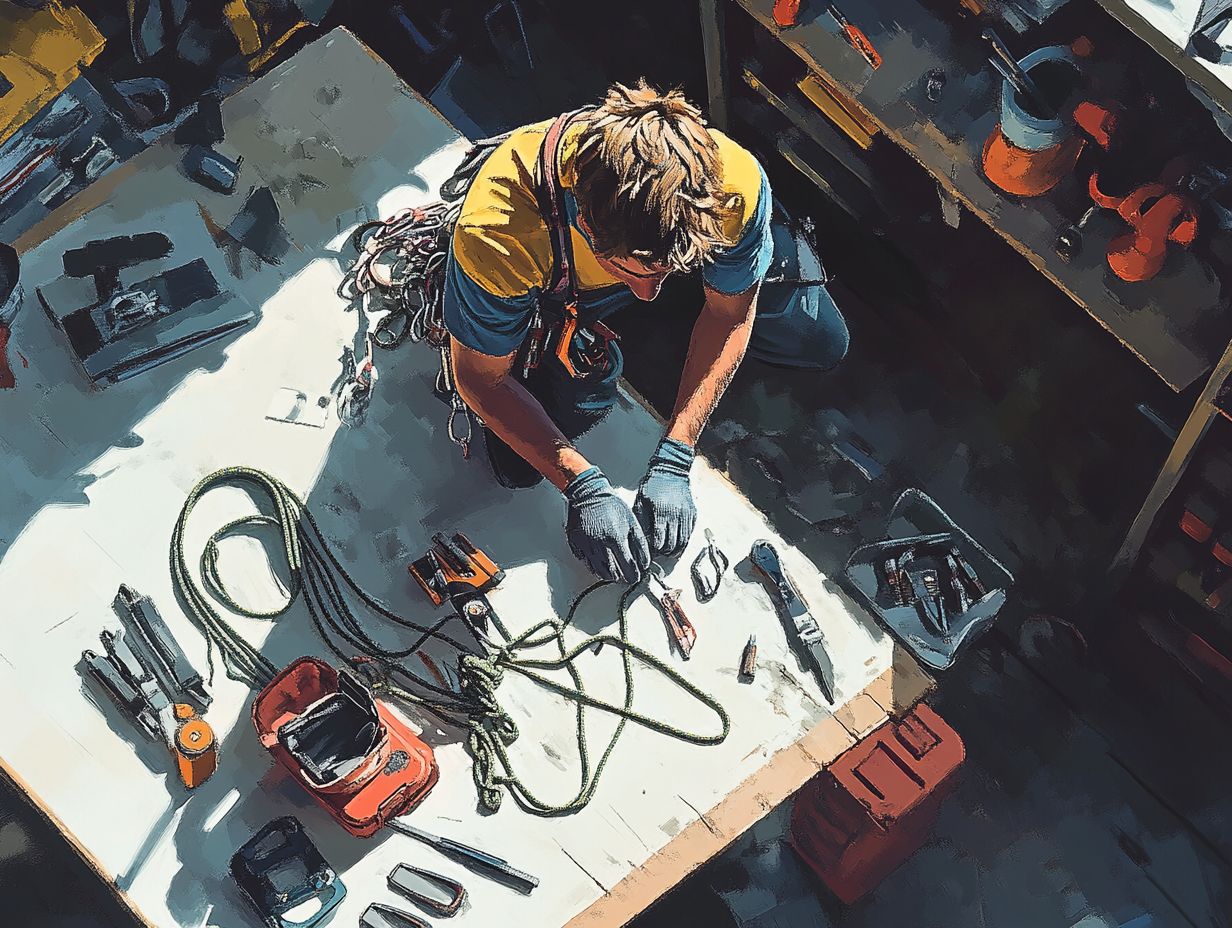
Worn-out harnesses can seriously jeopardize your safety as a climber, potentially leading to critical failures during exhilarating ascents, especially on challenging alpine routes.
Routinely inspect your harness before every climb to ensure you can trust your gear under demanding conditions. Start by examining the webbing for any signs of fraying, fading, or cuts; these can indicate significant wear. Don t overlook the stitching make sure there are no loose threads or damaged seams.
If you notice minor issues, you might consider DIY repairs like re-stitching. However, for extensive damage or uncertainty, it’s wise to consult a professional. Remember, prioritizing safety is of utmost importance.
Don t wait check your climbing gear today and gear up for your next adventure safely!
Bent or Damaged Carabiners
Bent or damaged carabiners present serious safety risks for climbers. Regular inspection of these vital pieces of your climbing gear is essential.
To ensure your safety while climbing, familiarize yourself with the signs of wear and tear on these devices. Look for:
- Noticeable bends in the spine
- Cracks
- Distorted gates
- Rough edges
Even minor problems can lead to unexpected failures. For small repairs, you can use a simple file to smooth out rough spots. However, significant damage warrants immediate replacement, especially for climbing equipment used during challenging climbs.
Understanding the importance of DMM testing a process to ensure carabiners meet safety standards is crucial. Regular cleaning and proper storage away from moisture can significantly prolong their lifespan, keeping you safe and ready for your next adventure.
Broken Cams or Nuts
Broken cams or nuts can lead to perilous falls during alpine climbs. Inspect and repair your gear promptly to keep your climbs safe and thrilling!
Recognizing early signs of wear or damage in your climbing gear is crucial. Examine the cam lobes for scratches or irregularities. Noticeable deformation or slippage in the mechanism should raise immediate red flags.
For nuts, check for cracks or severe surface wear. These issues can undermine their ability to hold securely under pressure. If you spot any signs of damage, consider whether to purchase replacements or seek repairs from a qualified technician.
Regular maintenance extends the lifespan of your gear and boosts your safety, ensuring you have reliable equipment like waterproof tents for challenging terrains.
Leaky Water Bottles
Leaky water bottles can disrupt your hydration during a climb. This signals that a quick repair or replacement is in order.
Leaks often arise from:
- Worn-out seals
- Loose caps
- Cracks in the bottle itself
These problems can be triggered by extreme temperature changes or impacts encountered during your ascent. Start by inspecting the seals for damage and ensuring that the cap fits snugly without gaps. A dab of silicone grease can work wonders on tired seals, while minor cracks can often be mended with food-safe adhesive.
When choosing a durable, leak-proof bottle, select options crafted from materials like stainless steel or high-quality BPA-free plastics. BPA-free plastics are safer for health and the environment and designed to withstand the rigors of outdoor activities.
Preventing Gear Issues
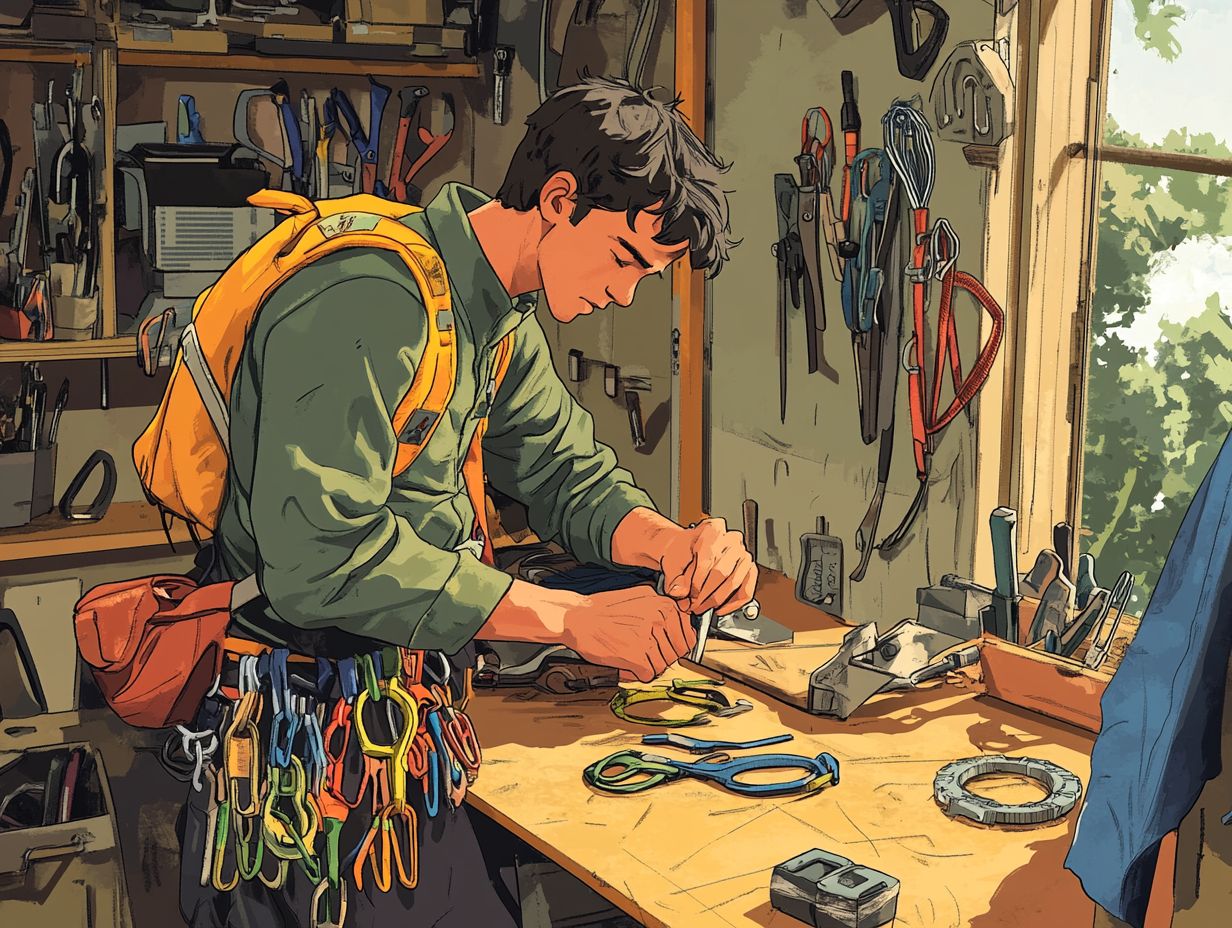
Preventing gear issues is essential for climbers who strive to uphold the integrity and safety of their equipment. Keep your ropes, harnesses, and carabiners in optimal condition to confidently tackle routes like the Pinnacle in North Conway, NH.
Prioritize gear maintenance to enhance performance and safeguard your well-being on every ascent. Don t wait! Inspect your gear now to ensure a safe climbing experience!
Tips for Maintaining and Inspecting Gear
Regular maintenance and thorough gear inspection are essential for preserving the safety and longevity of your climbing gear. This effectively prevents issues before they arise.
By adopting a proactive approach to gear upkeep, you can ensure optimal performance during your adventures. It s not just about inspecting ropes for frays; understanding how to clean and store carabiners properly is equally crucial.
Make it a habit to examine all your equipment regularly, especially after significant climbs or exposure to harsh conditions. This diligence allows for early detection of potential failures. For more information on this essential practice, consider the importance of climbing gear inspection. Proper storage practices can help avoid unnecessary damage, while cleaning techniques like using mild soap and warm water for your ropes will enhance their durability.
Focusing on these aspects not only enhances your safety but also elevates your enjoyment on the rock face, allowing you to appreciate beautiful views like those at Huntington Ravine.
When to Seek Professional Help
Understanding when to seek professional assistance for climbing gear repairs is crucial for ensuring your safety during alpine climbs. This is particularly important when you encounter complex issues that could compromise the integrity of your equipment.
Knowing When to Replace Gear
Knowing when to replace your gear is essential for climbers. Relying on outdated or damaged equipment can lead to serious safety concerns during your ascents.
Recognizing the signs of wear and tear can significantly enhance your climbing experience and keep you safe. For instance, if your ropes are starting to fray, show excessive fuzziness, or have stiff sections, it s time to let them go.
If your harness has frayed stitching, faded colors, or any noticeable stretch in the webbing, you’re facing potential risks. Don’t forget about your carabiners; any dents, corrosion, or malfunctioning gates are serious red flags.
Make it a habit to check your gear regularly to ensure every climb is safe and thrilling. Prioritize safety by retiring equipment at the first signs of deterioration, ensuring that your climbs remain as secure as they are exhilarating.
Frequently Asked Questions
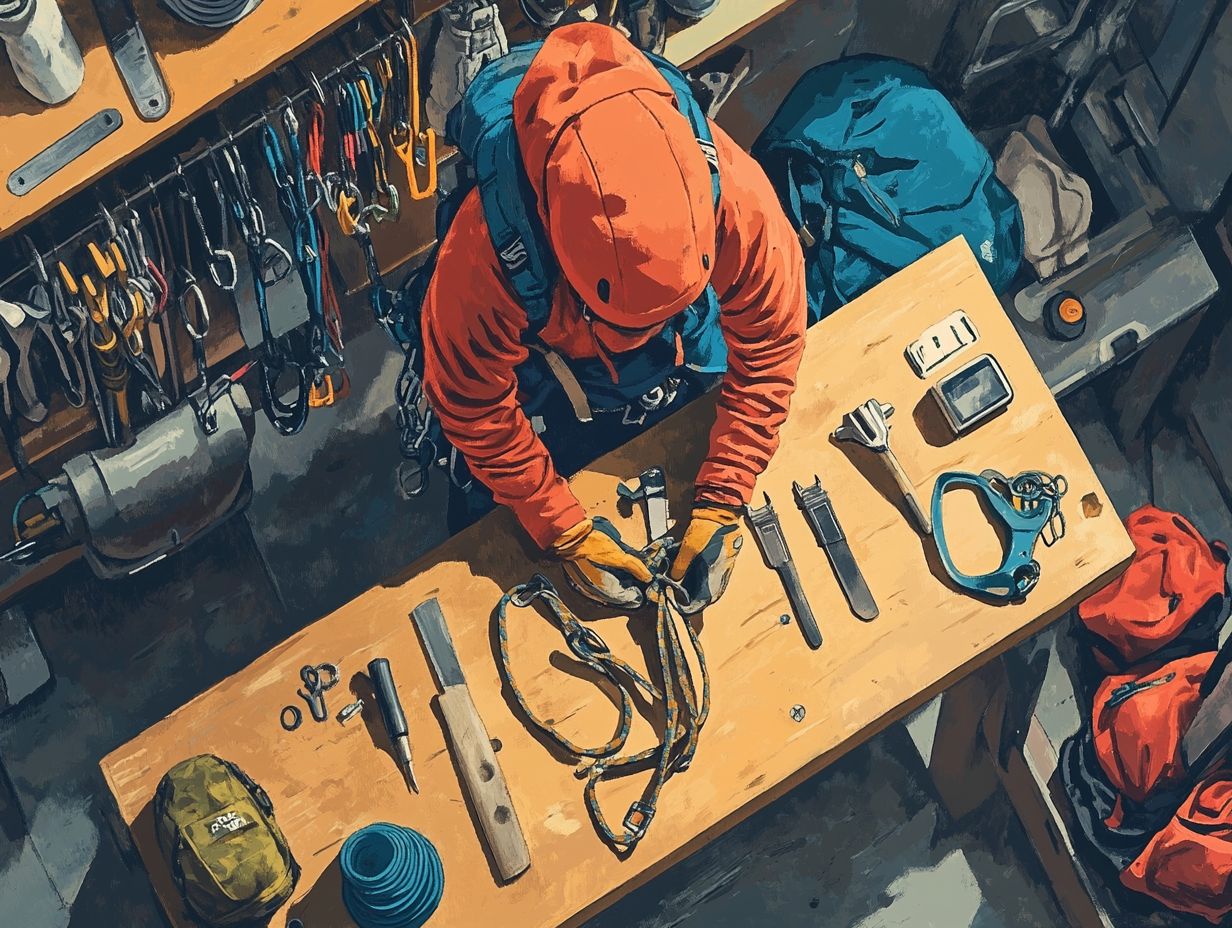
How can I fix a torn climbing harness?
First, assess the extent of the damage. If the tear is small, you can use a sewing needle and thread to mend it. For larger tears, you may need to use a patch or take it to a professional for repair.
What should I do if my climbing rope has a core shot?
A core shot occurs when the outer layer of the climbing rope is damaged, exposing the inner core. This can be a serious safety issue, and the rope should be retired. Replace the damaged section with a new rope or take it to a professional to be spliced. Consider using a Marathon rope for its durability.
How do I fix a stuck zipper on my climbing pack?
Try using a lubricant such as beeswax or graphite powder to help loosen the zipper. If that doesn’t work, use pliers to gently pull the zipper up or down. Avoid using excessive force, as it can damage the zipper.
What should I do if my carabiner gate is not closing properly?
First, check for any debris or dirt blocking the gate. If so, clean it out with a brush and water. If the issue persists, the gate may be bent and will need to be replaced.
How can I repair a damaged camming device?
If the damage is minor, you can file down any rough edges with fine-grit sandpaper. For more serious damage, it is best to replace the camming device. It is not worth risking your safety on a damaged piece of gear. Always keep a First Aid Kit handy in case of accidents.
Stay safe and climb smart regularly check your gear and seek help if you need it!
What should I do if my belay device is not functioning properly?
First, check if your belay device is dirty or has debris stuck in it. Clean it thoroughly and try again.
If it still doesn t work, inspect it for signs of wear or damage. Replace it if necessary.
For extra assurance, consider DMM testing. This helps ensure your device is safe and ready for use!

